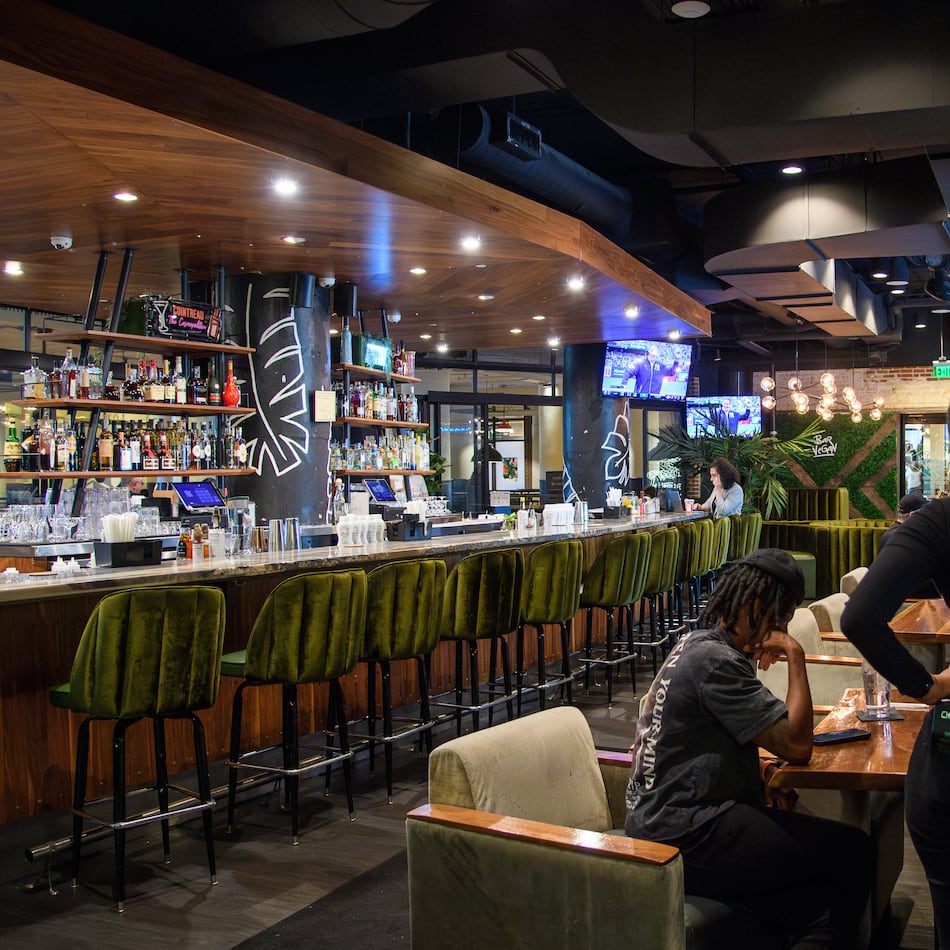Chick-fil-A charted unfamiliar territory late last year.
Atlanta’s homegrown fast food giant dove deeper into content creation by launching an app with cartoons, scripted podcasts and other forms of family-oriented entertainment. It’s called Chick-fil-A Play and is separate from the company’s mobile ordering platform.
Initial reports said the company was launching a streaming service. But Dustin Britt, Chick-fil-A’s executive director of brand strategy, said it’s an app that serves as a digital extension of the company’s play areas and the books and other items they provide in kid’s meals.
Chick-fil-A’s move comes after a number of its franchisees have done away with playgrounds in postpandemic remodels and replaced them with more indoor seating. The company said the app is not a replacement for playgrounds. Instead, it’s a natural complement.
“We’re going to continue to have things that happen in and around our restaurant and in the community that are centered around in-person activities and play,” Britt said. “We also want to have an opportunity to engage kids and families in play, even if they’re not inside our restaurants.”
Along with the cartoons and podcasts, Chick-fil-A Play also has animated e-books, interactive recipe and craft videos, games and joke generators. In typical Chick-fil-A fashion, animated cows guide users through every function. In the “Create” tab, one stands at a workbench. In the “Read” tab, another holds open a book and chuckles, with what appears to be a dot matrix printer spitting out copy paper behind him.
Much of the content on the app is designed to engage both children and their parents, instead of just one singular user, Britt said. It should also serve a value beyond just passive viewing, hence the cooking and craft videos.
Chick-fil-A also wants to provide content for families to consume in convenient ways, like when they’re in the car driving to school or soccer practice.
“We’re trying to lean into spaces where food and content naturally sit beside each other, and where we hear customers telling us that they feel like we could add a little bit of value to their experience if we provided a game or conversation starter,” Britt said.
Engaging the customer
Chick-fil-A is hardly the first restaurant chain to begin producing original content. McDonald’s has a long history of creating cartoons with its original characters, including a direct-to-video series called “The Wacky Adventures of Ronald McDonald,” four anime shorts and manga. Starbucks last year announced a plan to launch a studio to produce original entertainment, with its first project set to release this year.
What separates the chicken giant from its peers, however, is that it is one of the first to launch a dedicated app for it.
Timothy Halloran, a professor at Georgia Tech and longtime brand strategy consultant, said creating the app is just another way for the company to engage and establish a relationship with the customer.
Halloran’s research shows that this could lead to increased sales for the restaurant. In a paper published in 2021, Halloran and Richard Lutz, a marketing professor at the University of Florida, examined three months’ worth of social media activity among members of a fast casual restaurant chain’s Facebook page. They found that members who wrote positive comments on the chain’s posts or reacted with a “love” emoticon were more likely to make future purchases at the restaurant than those members who merely reacted with a “like” or had no engagement at all.
“If you can establish connections where the consumer is engaging with or having a positive experience with your brand, that’s generally going to result in positive associations,” Halloran said. “Ultimately, if there’s a choice (over food), they’ll say ‘Hey, there’s Chick-fil-A. I’ve had a good experience with them. Let me just go there.’”
Where a brand can run afoul, Halloran said, is over-the-top commercialism — encouraging the consumer to buy products, whether it’s food items or merchandise, at every push of the button. This doesn’t seem to be the case for Chick-fil-A Play. When a character in “The Legends of Evergreen Hills,” one of the animated series, brings up the subject of dinner, she doesn’t suggest going to Chick-fil-A. The strongest connection between the restaurant’s menu and the recipe videos is the fact that they both involve chicken.
Halloran said a best-in-class example of established retailers producing content is Hallmark. The greeting card and stationery company established a cable television channel in 2001, where they’ve broadcast movies and shows that are mostly of the heartfelt, family-friendly or holiday variety.
Watching a Hallmark movie doesn’t necessarily compel a viewer to drop everything and drive to their nearest Hallmark store. But when the time comes to buy a birthday card, Hallmark might be the first brand they think of.
Early reactions
Four months after its release, the company is pleased with the app’s reception so far, Britt said. He added that the launch exceeded some of Chick-fil-A’s expectations and hopes, though he wouldn’t detail what they were. The company also won’t reveal metrics, such as daily visitors, total downloads or the demographics of users. According to the Google Play Store, the app has been downloaded more than 100,000 times on Android devices. A similar estimate doesn’t exist for Apple users.
The company plans to release different types of content throughout the year, Britt said. It will also push app updates to address bugs and other user complaints and suggestions.
“As the customer continues to use (the app) this year, my expectation is they’ll take us into new and interesting places that maybe we didn’t imagine at the front end,” Britt said.
This article has been corrected to state that Richard Lutz is a professor at the University of Florida.
About the Author
Keep Reading
The Latest
Featured




